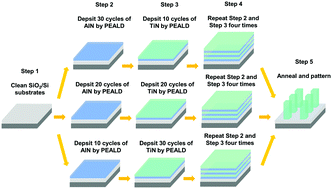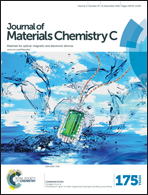Semiconductor-like nanofilms assembled with AlN and TiN laminations for nearly ideal graphene-based heterojunction devices
Abstract
As a new class of electronic devices, graphene heterojunctions in which graphene is combined with bulk or other layered 2D semiconductors have been realized. However, due to the restriction of available manufacturing, the substrates should be the bulk semiconductors adopted in graphene–semiconductor heterojunctions, limiting graphene-based heterojunction fabrication only on a few finite substrates. In addition, in order to lower the on-resistance, more fabrication processes such as etching poly-filled trenches and filling with silicon oxide should be performed. To solve the limitation, other 2D semiconductors such as MoS2 and WS2, which can be deposited on a variety of substrates, have been utilized to form heterojunctions with graphene. Nevertheless, wafer-scale MoS2 or WS2 growth is still a critical issue. Here we perform the plasma-enhanced atomic layer deposition (PEALD) technique to assemble AlN and TiN and achieve a semiconductor-like AlTiN nanofilm. In addition, the semiconductor-like AlTiN nanofilm is combined with graphene to fabricate a vertical heterojunction device, which has an ideality factor down to 1.13, close to the best reported ideality factor (1.08) of graphene heterojunctions. The current on–off ratio is up to 105 dispensing with any gate bias voltage under ambient conditions. The graphene–AlTiN heterojunction devices are compatible with a variety of substrates and can be applied to large-scale and power-efficient electronics.


 Please wait while we load your content...
Please wait while we load your content...